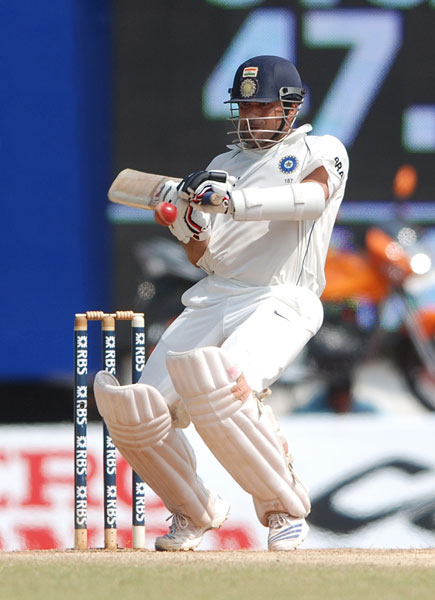Sachin Tendulkar, God to many, legend to even more, finally wrote about himself, his cricket, and his life. And just like The Word, Sachin’s book too, does not have the flourish of language or any serious scandals. It’s his journey through an eventful life of cricket, as he sees it. In choosing to write a book, Sachin has clearly said what he wanted to, and has chosen to hold back many, many things that we still have to only guess.

A little uncharacteristically though, he talks about his wife, their romance, and given his readers a few pictures of his family, whose privacy he has so far guarded very zealously.
It’s not exactly the kind of writing that will make any of us read the 443 page (plus appendix and other add-ons) in one go, but this is the best that is officially available on Sachin, conceptualised by him and given shape to by Boria Majumdar.
Sachin is well aware that he will not be able to please everyone. So he gives us this caveat in the prologue: “It seems to me that no autobiography can claim to document every detail of the author’s life. That’s impossible. There are bound to be issues that can’t be written about for one reason or another, events that are too personal or perhaps too sensitive.”

Recommendation : Buy. It’s Sachin, after all!
Playing it my way : Sachin Tendulkar, Hodder and Stoughton, London, Rs 899
The controversial parts of the book, where he criticises Greg Chappel (“ringmaster who imposed his ideas on the players”) and Rahul Dravid (2004 Multan Test declaration with Sachin on 194), were already public even before the book was officially released. Those who seek more such controversial stuff from the book will be disappointed. There’s none! Most people, not just cricket lovers, have, for a large part of our lives in these past two decades, followed Sachin’s life and career. Most of us remember the joy that the young boy gave us when he repeatedly hoisted Abdul Quadir over the ropes in a 20-over exhibition match in Peshawar in 1989, and put victory within India’s grasp (with the established blaster Krish Srikkanth watching on from the other end, and later saying that it was one of the best innings he had ever seen in his life), but we may not remember the baptism with fire in that series. Sachin confesses in his book, “After my very first innings in Test cricket, during which I was all at sea against Wasim and Waqar, I began to doubt my ability to bat and question whether I was ever going to be good enough to play at international level.”
The series by fire (“much more than a cricket match that was being played between the two teams”) did not end there. At Sialkot, Test No.4, a rising Waqar delivery rearranged his facial features and left him bloodied.
Describing the incident vividly, and what possibly is one of the best, most candid and straight passages in the book, Sachin recalls: “I misjudged the bounce on the ball. It rose six inches higher than expected and hit me on the flap of the helmet before deflecting and hitting my nose. At that time I was the only batsman besides Srikkanth not to wear a grille. It wasn’t an act of bravado; I just wasn’t used to playing with one…To add to my discomfort, a banner in the stands read, ‘Bachhe ghar ja ke dudh pee ke aa.’ (Kid go home and drink milk).” Imran eventually got him for 57, but by then, Sachin managed to ensure that India did not lose that match.
Sachin has taken some space to explain the pains of a middle class boy trying hard to get by with a little too much fondness for cricket, and how difficult it was. All the pain and the hard days would easily not have amounted to much for Sachin too. After all, his pal, Vinod Kambli who, by Sachin’s own admission elsewhere, was more talented, had spectacularly fallen by the wayside. Sachin will not talk much about it. But the disappointment for cricket lovers is that the 664 the two put together in a school game, is so much more better described by his compatriots than in the book — of balls getting lost, of Kambli’s legendary forgetfulness, of how a bowler refused to bowl any longer, of how the entire reserve had to be called up even as the two kept belting out runs. Nor does the book satisfy anyone looking for insights into his legendary Perth innings. One can only assume that this will be the first of several books of the young legend.
Dedicated to ‘all my fellow Indians,’ the publishers have announced that the proceeds from the book “will be used to support two charitable causes: the alleviation of malnutrition in children and the provision of clean water to the underprivileged.”
That will be two more reasons to buy a copy. Today.






